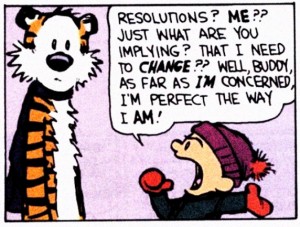Over the last dozen years I have been part of investments and executive leadership in companies from Nutrisystem to Seamless, and Lufthansa to Rant Media.
If there’s one thing in common with success and failure its the ability to foster a community of people willing to say no.
First let me explain the objective. The objective is to encourage the people with unique skillets and view points to contribute to the bigger conversation to optimize everything from the location of the placement of a button to target market selection and messaging.
As a CEO, regardless of stage, we end up being a bit of a jack of all trades, master of none. We do have a skill set that is stronger than others, but the day to day is executed by dedicated UI designers, social marketing experts, sales people, and customer support reps.
Fostering a culture of people willing to say no, means encouraging people at all levels to communicate up, down and sideways the market information needed to guide effective decision making.
Let me give you two real world examples of where the absence of the word no drives bad decisions, followed by best practices to succeed.
5 executives sit in a room and are discussing mid term plans for the business. The company is growing revenue at about 15% per month. The company has to start investing in the infrastructure to support a growing organization. As the executives sit in the room you have 5 distinct personalities.
CEO, dream chaser
COO, fellow dream chaser but a little more operationally oriented
CFO, money cruncher
CTO, all things cool and forward thinking
CSO / CGO, process oriented focused on strategic growth
The challenge is that in this room the only person saying no to some of the dream chasing was the CSO / CGO. The CFO was not empowered, or did not feel empowered to say no. The CTO didn’t really care about operations and finance and the COO was ok allowing the CEO to divert company focus and resources to chase his dreams.
Leadership that is afraid of their superiors or peers, leads to really bad decisions. Encouraging people to speak up means they are able to say what they think and feel is best for the company without fear of losing their job. This is the reality behind the wall between knowledge transfer and decision making. The majority of those holding the operational and market knowledge are discouraged from sharing in fear that their opinions may lead to a negative work environment or termination.
The second example is a very senior executive deciding a product release will happen on 4 platforms in the next 120 days. The product hasn’t been fully defined, and the assumptions around product market fit have not been validated.
The team scrambles to meet the execs objectives but there is no way to meet his expectations, as clear expectations have not been set for the product or market.
There is friction at the top as product and business can’t get on the same page. Product has been given an unrealistic timeline for an undefined product. Pivots and input from the different department heads must be refused to meet the arbitrary timeline, and the exec meets a different approach to market validation, product design, and engineering with resistance.
This scenario creates two major issues.
1. Unrealistic expectations in terms of what someone can consistently deliver at the desired quality level. Making promises based upon these expectations will lead to customer dissatisfaction as the time and quality of output starts to suffer.
2. Killing motivation and the working relationship as teams resent the never ending late hours and short timelines. Work will suffer, people will leave and the negative culture will ripple through the ecosystem.
Now for the solution. Here are five steps to set up a constructive company of naysayers.
1. Solutions not problems. Presenting problems is negative and puts people in complaint mode. Ask people for solutions only, it doesn’t matter how off the wall it is. If they think about the solution they become involved in the process and you are alerted to the problem in a constructive and positive way.
2. Organized channels. Organize the time and frequency of the feedback. Schedule weekly, or daily depending upon the department, mini meetings for people to talk about what was learned and how the organization can improve as a whole. As organizations get really big you’ll need the small group meetings to happen with representatives from each department or operating role present. There MUST be a representative from each operating department for effective discussions. Marketing, technology, sales, customer support. Leaving any one of these functions out of the discussion creates major information and impact gaps.
3. Set expectations together. Before committing to major releases make sure all of the stakeholders are involved. Forcing a timeline on any department leads to resentment and poor quality. It’s critical that all functions in the organization have a seat and voice at the table. Customer support hears the complaints, marketing is measuring the messages and expected value exchange that performs best, and product is measuring the user flows to understand key behaviors for users that transition from interested to active, active to engaged, and engaged to profitable.
4. Sprints are followed by breaks. Success is a marathon made up of lots of little sprints. Sprints must be followed by a period of reduced pace or the crash will happen. If you’re driving people to work time and a half to deliver a product in 2 months, do they get the next month to relax and work 53 day weeks? It’s not about equalling out the hours it’s about keeping the team motivated so they are ready to sprint again. People want to enjoy the work they do and the people they work with. If work becomes all consuming and stressful with no life outside of work, people will stop enjoying the work and you will lose key employees. Allow and encourage people to say no if they don’t think they can achieve the level of quality you want in the time requested. There should be an explanation for the no, not because you demand it, but because it will help you learn what makes them tic, how much time they do really need to work at the right pace for their happiness and productivity and this will help you in scheduling and setting expectations at any level internal or external.
5. Be human and honest. Being honest and human with people that work with and for you is critical. It’s not about being buddies, it’s about respecting that people want to be treated a certain way and that if they aren’t happy their work will suffer and your work and company will suffer as well. Be honest when you make a mistake. Hold yourself accountable and show understanding and genuine interest in the lives of the people around you.
Leaders can get caught up in an assembly line approach with the KPI being output versus quality or impact.
Ask yourself, if you had to choose between someone saying yes and then under delivering or not delivering at all and someone saying no, which would you choose?
Too often we put people we work with, peers and reports, in positions where they feel as though they can’t say no. By doing this we set them and ourselves up for failure.
Encourage the no.
Ask for solutions, not problems.
Everyone gets a seat.
Set realistic expectations.
Be human and honest.
(45)







